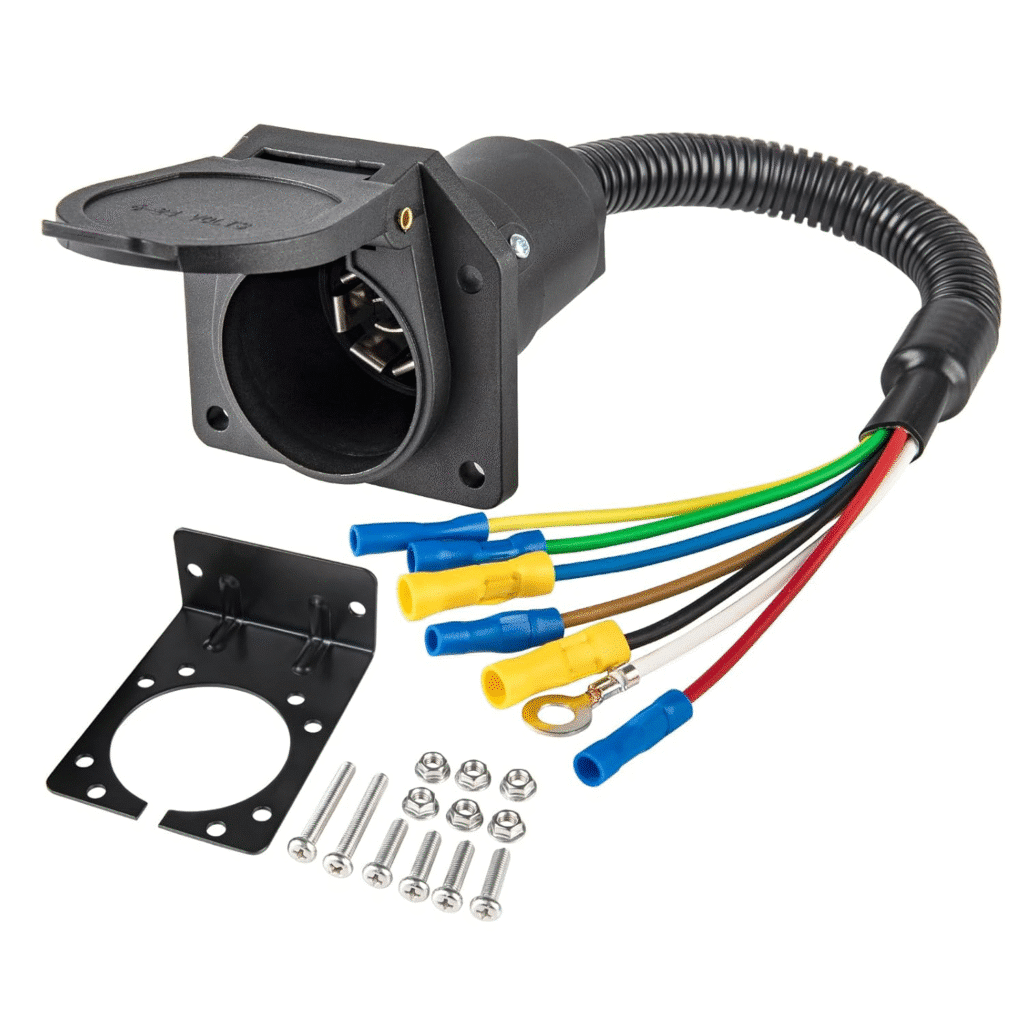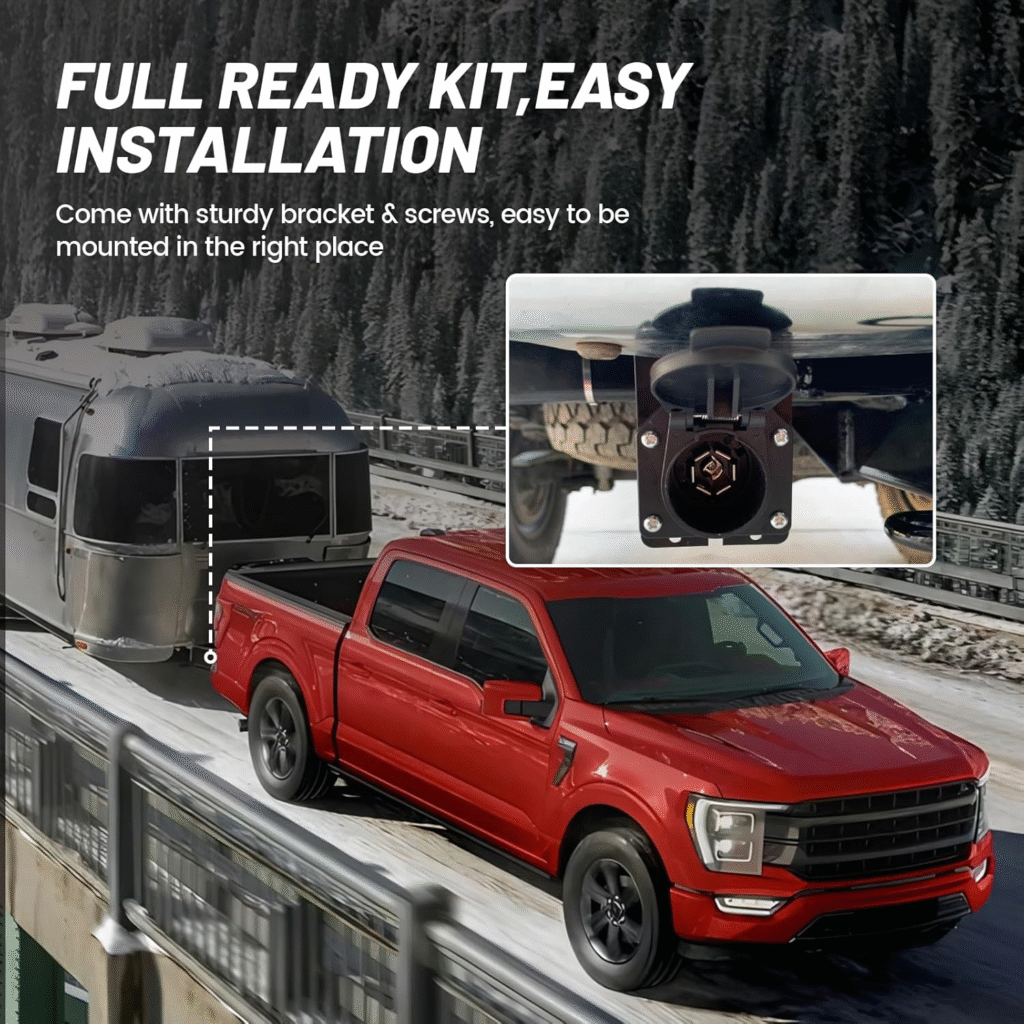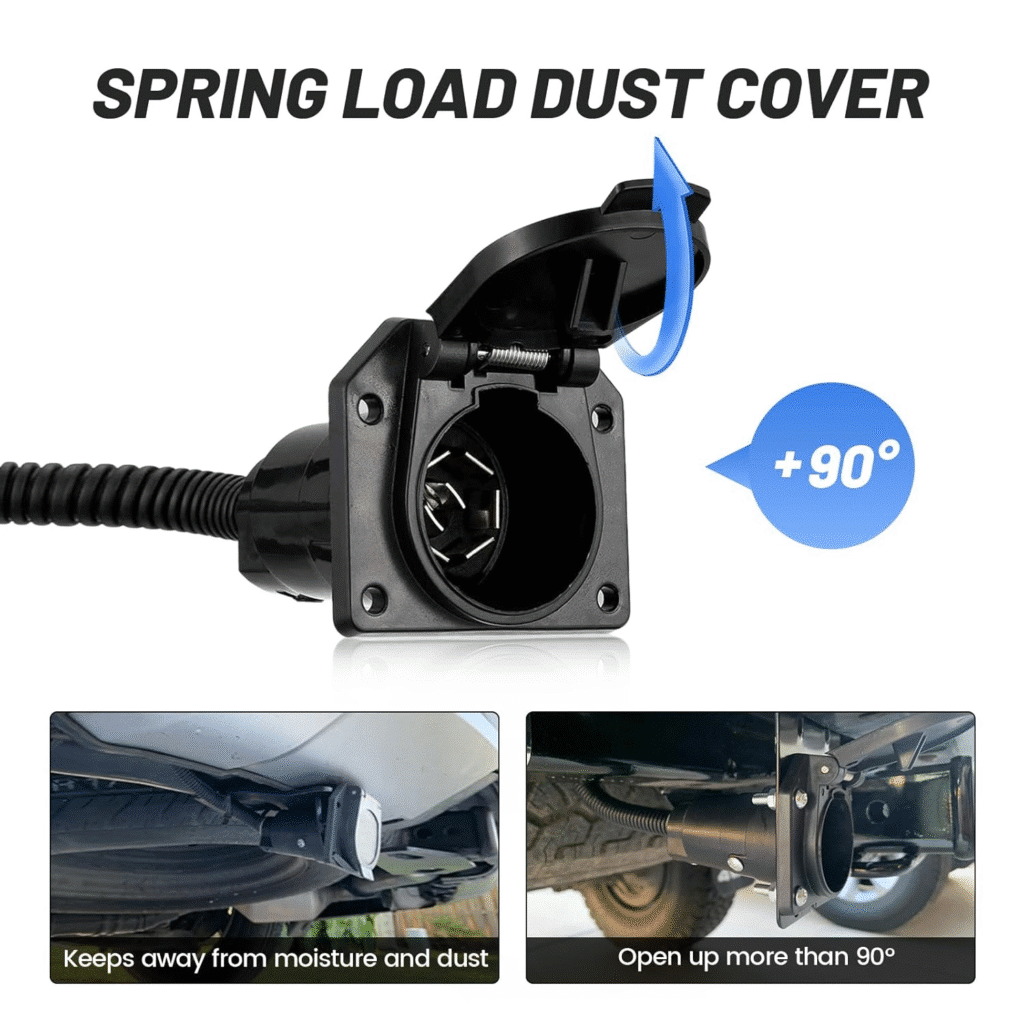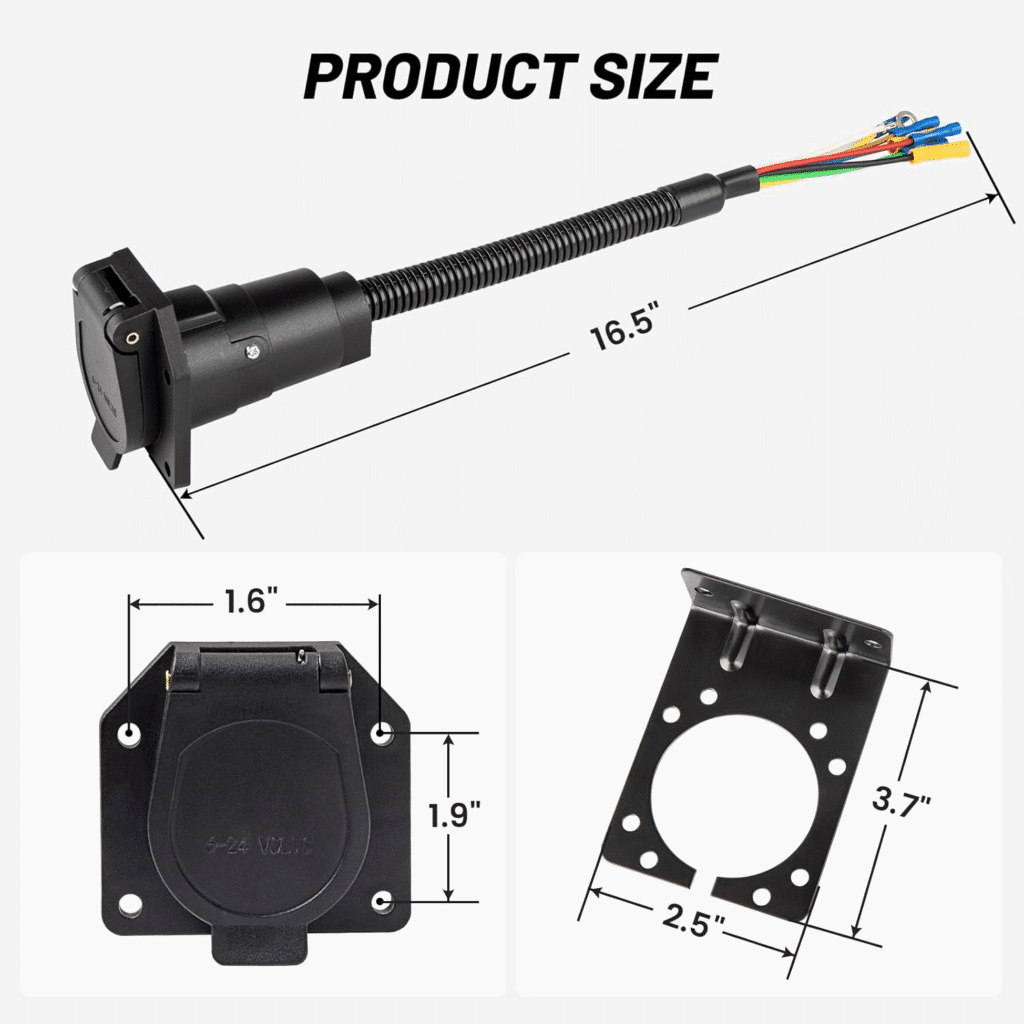Did you realize about 20,000 accidents happen each year in the United States because of bad trailer lights? Safe towing hinges on lights that work correctly, so a dependable 7-pin trailer light connector socket becomes really important. From what I have seen, a solid connector seriously improves your towing plus gives you confidence. I will get into the details of 7-pin trailer light connector sockets, covering everything from setting it up to figuring out any problems.

Why Upgrade to a 7-Pin Trailer Light Connector Socket?
Before diving into the nitty gritty, let us discuss why a 7-pin trailer light connector socket is worth your attention. The 4-pin and 7-pin connectors are commonplace. While a 4-pin handles your basic lighting needs such as tail lights, brake lights and turn signals, the 7-pin brings a host of additional benefits.
- Extra Power: A 7-pin connector includes an extra power wire, useful for charging a trailer battery or running interior lights.
- Reverse Lights: It has a specific pin just for reverse lights, which means better visibility when you are backing up.
- Electric Brakes: Trailers equipped with electric brakes need a 7-pin connector to link the brake controller in your vehicle to the trailer’s braking setup.
- Safety First: Many newer trailers, especially the ones using electric brakes or extra power, are built for a 7-pin connector. Using the right connector makes sure all safety features are fully operational.

Considering the added capabilities, I think a 7-pin connector is a fantastic upgrade, particularly if you are planning to tow various trailers or have a need for those additional features.
Understanding the 7-Pin Trailer Light Connector Socket Wiring
The wiring might appear a bit daunting when you are dealing with a 7-pin trailer light connector socket. Fortunately, the wiring is standardized, so wire colors usually mean the same thing across manufacturers. Nevertheless, checking the wiring diagram for your specific connector is still important.

Here is a breakdown of the standard 7-pin trailer light connector socket wiring:
- White: Ground
- Blue: Electric Brakes
- Brown: Tail Lights
- Yellow: Left Turn Signal and Brake Light
- Green: Right Turn Signal and Brake Light
- Black: 12V Auxiliary Power
- Purple: Reverse Lights
When you are wiring your connector, securing each wire to its correct terminal is paramount. Loose or incorrect wiring can cause all sorts of problems, starting with lights not working and potentially leading to a total power failure. I advise using a quality wiring tool and not rushing, so you can be sure each connection is solid.
Maintenance for Longevity
Keeping your 7-pin trailer light connector socket in good working order for years to come means performing regular maintenance. Here are a few tips:
- Clean the Connector: A wire brush or sandpaper can be used to clean the connector terminals, removing any corrosion or debris.
- Apply Dielectric Grease: Applying a thin coat of dielectric grease to the connector terminals guards them from moisture and corrosion.
- Inspect the Wires: Check the wires for damage, such as cracks, cuts or frayed insulation. Replace any damaged wires immediately.
- Shield the Connector: When you are not using it, protect the connector from the weather with a cap or by storing it somewhere dry.
- Check the Ground Connection: Regularly checking the ground connection will ensure it is solid and free of corrosion.

A little maintenance will extend the life of your 7-pin trailer light connector socket.
Choosing the Right 7-Pin Trailer Light Connector Socket
With so many 7-pin trailer light connector sockets on the market, picking the right one might feel overwhelming. Give these factors some thought:
- Material: Look for a connector constructed from strong materials such as metal or heavy duty plastic. These materials will endure towing and deliver reliable service.
- Weather Resistance: Pick a weather resistant connector that can withstand rain, snow and UV rays.
- Ease of Setup: Find a connector that is easy to install, with clear instructions.
- Compatibility: Make certain the connector is compatible with both your vehicle and trailer.
- Price: Keep your budget in mind. While going with a quality connector is important, spending a fortune is not necessary.
7-Pin Trailer Light Connector Socket and Electric Brakes
A key reason to upgrade to a 7-pin trailer light connector socket is for electric brake support. Electric brakes are essential for safely towing heavier trailers. They supply extra braking power and keep the trailer from swaying. The blue wire inside the 7-pin connector handles the electric brakes. This wire connects to the brake controller in your vehicle, which then signals the trailer’s brakes when you apply your brakes.
I always recommend using a functional electric brake system when towing a trailer equipped with electric brakes. A safe and controlled towing experience will be the result.
Improving Safety with a Connector Socket
A reliable 7-pin trailer light connector socket is crucial for towing safely. Making sure your trailer lights are working correctly prevents accidents and safeguards yourself and other drivers. The added features of a 7-pin connector, such as extra power and reverse lights, improve your towing experience and add convenience. I consistently see the positive impact of regular checks and maintenance.
Final Thoughts
Upgrading to a 7-pin trailer light connector socket is a worthwhile investment for anyone who tows a trailer. A 7-pin connector, with its additional features and safety benefits, enhances your towing and brings peace of mind. Keep the setup steps in mind, troubleshoot any issues that arise and perform regular maintenance to keep your connector in good working condition. Maintaining your trailer lighting and using the proper 7-pin trailer light connector socket are paramount for safe towing.
